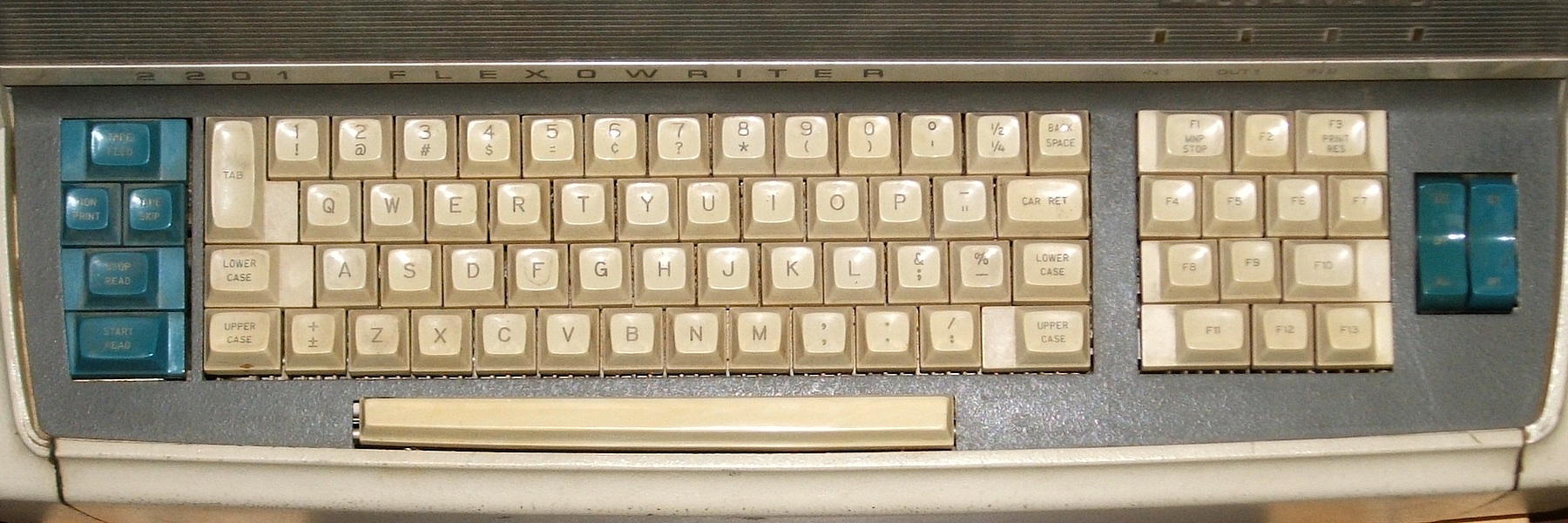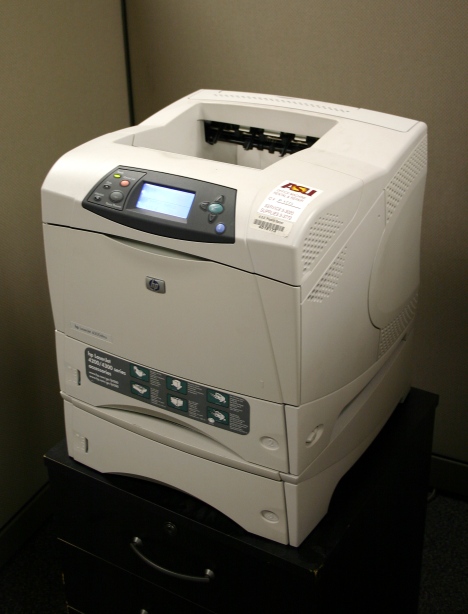|
WordUp (program)
WordUp is a word processor for the Atari ST platform released by Neocept in 1988. It was one of the first word processors on the platform to offer a true what you see is what you get (WYSIWYG) display, using GDOS to work with multiple fonts and embedded graphics. Most previous word processors on the platform were either entirely text-based, like Atari's own ST Writer, or did not use GDOS and did not support multiple fonts and effects on-screen. Overall, the program was relatively simple, similar to MacWrite. It did offer some more powerful features like the ability to generate a glossary and good control over typography. Reviews were generally positive, especially over its ability to easily perform layout and editing in rich documents, but the lack of a spell checker and the very slow printing was a notable concern in most reviews. Description GDOS The Graphics Environment Manager, or GEM, formed the basis of the Atari ST's graphical user interface (GUI). GEM included a system ... [...More Info...] [...Related Items...] OR: [Wikipedia] [Google] [Baidu] |
Atari TOS
TOS (The Operating System) is the operating system of the Atari ST range of computers. This range includes the 520ST and 1040ST, their STF/M/FM and STE variants and the Mega ST/STE. Later, 32-bit machines ( TT, Falcon030) were developed using a new version of ''TOS'', called MultiTOS, which allowed multitasking. More recently, users have further developed TOS into FreeMiNT. Details Atari TOS (The Operating System) debuted with the Atari 520ST in 1985. TOS combines Digital Research's GEM GUI running on top of the DOS-like GEMDOS. Features include a flat memory model, DOS-compatible disk format (starting with TOS 1.04), support for MIDI, and a variant of SCSI called ACSI in later versions. Atari's TOS is usually run from ROM chips contained in the computer: Thus, before local hard drives were available in home computers, it was an almost instant-running OS. TOS booted off floppy disks in the very first STs, but only about half a year after the ST was introduced, all ST mode ... [...More Info...] [...Related Items...] OR: [Wikipedia] [Google] [Baidu] |
ASCII
ASCII ( ), abbreviated from American Standard Code for Information Interchange, is a character encoding standard for electronic communication. ASCII codes represent text in computers, telecommunications equipment, and other devices. Because of technical limitations of computer systems at the time it was invented, ASCII has just 128 code points, of which only 95 are , which severely limited its scope. All modern computer systems instead use Unicode, which has millions of code points, but the first 128 of these are the same as the ASCII set. The Internet Assigned Numbers Authority (IANA) prefers the name US-ASCII for this character encoding. ASCII is one of the IEEE milestones. Overview ASCII was developed from telegraph code. Its first commercial use was as a seven-bit teleprinter code promoted by Bell data services. Work on the ASCII standard began in May 1961, with the first meeting of the American Standards Association's (ASA) (now the American National Standards I ... [...More Info...] [...Related Items...] OR: [Wikipedia] [Google] [Baidu] |
Amiga
Amiga is a family of personal computers introduced by Commodore International, Commodore in 1985. The original model is one of a number of mid-1980s computers with 16- or 32-bit processors, 256 KB or more of RAM, mouse-based GUIs, and significantly improved graphics and audio compared to previous 8-bit systems. This includes the Atari ST—released earlier the same year—as well as the Macintosh and Acorn Archimedes. Based on the Motorola 68000 microprocessor, the Amiga differs from its contemporaries through the inclusion of custom hardware to accelerate graphics and sound, including sprite (computer graphics), sprites and a blitter, and a pre-emptive multitasking operating system called AmigaOS. The Amiga 1000 was released in July 1985, but production problems kept it from becoming widely available until early 1986. The best-selling model, the Amiga 500, was introduced in 1987 along with the more expandable Amiga 2000. The Amiga 3000 was introduced in 1990, followed by t ... [...More Info...] [...Related Items...] OR: [Wikipedia] [Google] [Baidu] |
ST/Amiga Format
''ST Amiga Format'' was a computer magazine that covered the Atari ST and Amiga computers. It was published by Future plc to cover the ever growing market for the, then-new, 16-bit home computers. Issues were equally balanced with coverage for both Amiga and Atari ST systems. Issue 1 included a main feature 'ST or Amiga? The Choice is Yours', where the pros and cons for each machine was examined. ''ST Amiga Format'' often included a floppy disk mounted on the cover, which used a unique dual format filesystem that could be read by both the Amiga and ST. The disks included game demos, software utilities, etc. Regular features included tutorials (on both Amiga and ST), Gamebuster, Gold Dust (a rumours section), Desktop (tips and technical guide for the ST), Workbench (tips and technical guide for the Amiga), Escape Sequence (last page) and the usual news and letters pages. Issue 13 (July 1989) was the last issue under the dual format. The sale of sister magazine ''ACE'' freed ... [...More Info...] [...Related Items...] OR: [Wikipedia] [Google] [Baidu] |
Mail Merge
Mail merge consists of combining mail and letters and pre-addressed envelopes or mailing labels for mass mailings from a form letter. This feature is usually employed in a word processing document which contains fixed text (which is the same in each output document) and variables (which act as placeholders that are replaced by text from the data source word to word). Some word processors can insert content from a database, spreadsheet, or table into text documents. It is a powerful tool for writing a personalized letter or e-mail to many people at the same time. It imports data from another source such as a spreadsheet and then uses that to replace placeholders throughout the message with the relevant information for each individual that is being messaged. History Mail merge dates back to early word processors on personal computers, circa 1980.see p. 2-2; MailMerge not a new feature, and this is 2nd Ed, (C) 1982 WordStar was perhaps the earliest to provide this, originally ... [...More Info...] [...Related Items...] OR: [Wikipedia] [Google] [Baidu] |
NEOchrome
NEOchrome is an early color bitmap graphics editor for the Atari ST. It was written by Dave Staugas, a programmer at Atari Corporation and co-author of the ST's operating system. ''NEOchrome'' supports hardware-supported color cycling to give the impression of animation. A color cycling waterfall, created with ''NEOchrome'', was one of the iconic images of the early Atari ST. Following in the footsteps of MacPaint and the Apple II version which was renamed Mouse Paint, both released in 1984, ''NEOchrome'' uses the then-novel representation of painting tools by icons (in addition to other GUI elements). A pre-release version (v0.5) was included with the system disks of the first STs. Version 1.0 arrived later, and was bundled with several versions of the ST. Although not officially public domain, this version was often treated as such, and was never actually sold. NEOchrome enjoyed a relatively high level of popularity within the ST community, even in the face of more advanced ... [...More Info...] [...Related Items...] OR: [Wikipedia] [Google] [Baidu] |
DEGAS (software)
DEGAS (D.E.G.A.S., Design & Entertainment Graphic Arts System) is a bitmap graphics editor created by Tom Hudson (software developer), Tom Hudson for the Atari ST and published by Batteries Included (company), Batteries Included in 1985. Hudson created some of the sample paintings that shipped with ''DEGAS''. Development The working title of DEGAS was HUDraw, where "HUD" stood for "Hudson." Gary Yost of Antic Software wanted to publish DEGAS, but Hudson chose Batteries Included (company), Batteries Included because "they were, in my opinion, the best Atari software company at the time." Yost and Antic Software published Hudson's next program, Cyber Studio, CAD 3D. File formats Legacy ''Antic (magazine), Antic'' magazine published winners of an art competition for those using the software in July 1986. DEGAS was followed in 1986 with DEGAS Elite. It adds multiple work screens, color-cycling animation, and other features. See also * NeoChrome References Extern ... [...More Info...] [...Related Items...] OR: [Wikipedia] [Google] [Baidu] |
1st Word Plus
1st Word is a word processor program for the Atari ST developed by GST Computer Systems and published in 1985. It was given away with all ST systems from December 1985 for the next two years. Although it was relatively well received, it was a very simple program, lacking most power features and was very slow when working in large documents. In spite of any limitations, it's wide availability made the program's .DOC file format became a ''de facto'' standard for the platform and was widely supported by other programs like desktop publishing systems. 1st Word Plus was a greatly improved version released by GST when the bundling deal ended in 1987. This addressed performance issues and added dozens of features that made it one of the faster and most feature-packed word processors on the platform. Among its more notable additions were a spell checker, mail merge, and support for footnotes and similar long-document editing features. This became one of the best selling programs on the S ... [...More Info...] [...Related Items...] OR: [Wikipedia] [Google] [Baidu] |
Function Key
A function key is a key on a computer or terminal keyboard that can be programmed so as to cause an operating system command interpreter or application program to perform certain actions, a form of soft key. On some keyboards/computers, function keys may have default actions, accessible on power-on. Function keys on a terminal may either generate short fixed sequences of characters, often beginning with the escape character (ASCII 27), or the characters they generate may be configured by sending special character sequences to the terminal. On a standard computer keyboard, the function keys may generate a fixed, single byte code, outside the normal ASCII range, which is translated into some other configurable sequence by the keyboard device driver or interpreted directly by the application program. Function keys may have abbreviations or pictographic representations of default actions printed on/besides them, or they may have the more common "F-number" designations. History ... [...More Info...] [...Related Items...] OR: [Wikipedia] [Google] [Baidu] |
Laser Printer
Laser printing is an electrostatic digital printing process. It produces high-quality text and graphics (and moderate-quality photographs) by repeatedly passing a laser beam back and forth over a negatively-charged cylinder called a "drum" to define a differentially-charged image. The drum then selectively collects electrically-charged powdered ink ( toner), and transfers the image to paper, which is then heated to permanently fuse the text, imagery, or both, to the paper. As with digital photocopiers, laser printers employ a xerographic printing process. Laser printing differs from traditional xerography as implemented in analog photocopiers in that in the latter, the image is formed by reflecting light off an existing document onto the exposed drum. Invented at Xerox PARC in the 1970s, laser printers were introduced for the office and then home markets in subsequent years by IBM, Canon, Xerox, Apple, Hewlett-Packard and many others. Over the decades, quality and speed ... [...More Info...] [...Related Items...] OR: [Wikipedia] [Google] [Baidu] |


